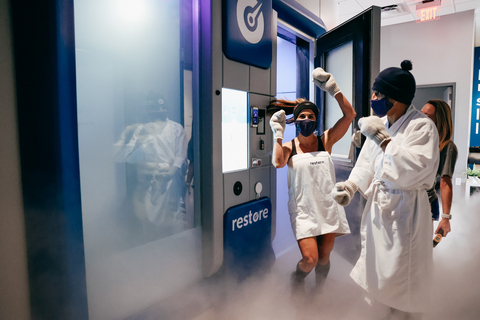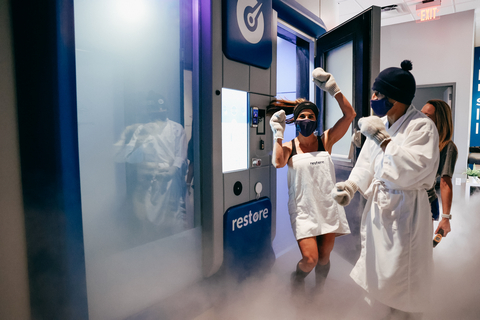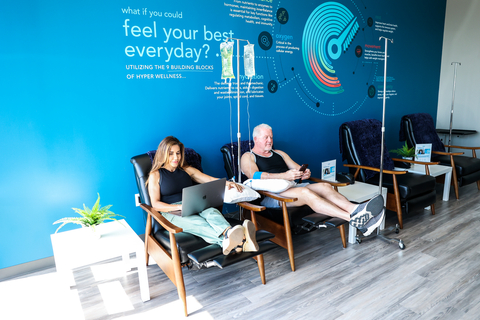AUSTIN, Texas--(BUSINESS WIRE)--Restore Hyper Wellness (Restore), the leading provider of proactive wellness services, today launched a new survey in partnership with Wakefield Research to benchmark a new category of care—Hyper Wellness. Hyper Wellness is grounded in 9 Elements everyone should incorporate into their daily life both inside and outside of Restore’s four walls: oxygen, hydration, nourishment, cold, heat, light, movement, rest and connection. This category of care combines groundbreaking science with expert guidance to help consumers proactively improve their health. With the average American lifespan and healthspan having more than a 15 year gap and life expectancy dropping for the second year in a row in the U.S., consumers are increasingly turning to proactive, preventative Hyper Wellness modalities to feel their best and close the gap.
The report showcases how consumers are adopting wellness services, products and solutions, and further sheds a light on how they can proactively optimize their body and mind, no matter what stage they are in their health journey. Surveying 2,000 U.S. adults 18 and over, the report’s findings detail how consumers are integrating Hyper Wellness into their everyday lives:
- More than half of Americans (54%) report that preventive health measures are a part of their routines
- 25% of Americans who engage in preventative health and wellness activities say they couldn’t go a full week without their health and wellness routine before experiencing negative mental and/or physical effects
- 85% would be willing to try a new Hyper Wellness activity, service, or product
- 63% believe investing in Hyper Wellness activities, services or products can help them save money in the long-term
“As part of our ongoing commitment to providing accessible proactive care methods to the nation, we wanted to better understand how consumers are viewing health and wellness and how they integrate it into their lives,” said Jim Donnelly, Restore’s CEO and Co-Founder. “We not only learn those behaviors through the report, but also categorize those modalities and introduce Hyper Wellness as an extension and complement to the traditional healthcare industry. We are excited to continue this report and use it to ensure that we are providing the best, most effective experience to our members that reflects consumer trends.”
Wellness Services Are Recession Proof
With the findings showcasing that U.S. consumers are considering supplementary care methods, the impending recession is proven to have little impact on these behaviors with 62% of people saying preventative health and wellness activities would be the last thing they cut back on. In fact, 62% of people are willing to slow down their social life and limit going to bars and concerts to continue to afford to participate in preventative health and wellness activities. Other findings show:
- More than half of people said they’d be willing to ditch their store bought cup of coffee to continue to afford their current health and wellness activities/products
- 1 in 3 admitted to ditching binge-worthy cable and streaming services to keep their health and wellness plan intact
- 83% of people believe that cutting back on their health and wellness services to save money will cost them more in the long term
“In my practice, I’ve found that feeling your best and reaching your full potential requires integrating medical care with proven practices in Hyper Wellness and human performance,” said Richard Joseph, MD, Restore Medical Advisory Board member. “As consumers continue to explore wellness modalities that support proactive health, it’s no surprise that many consumers are factoring this into their household budgets. I expect to continue to see greater adoption as the greater public prioritizes their health.”
Generations Continue to Prioritize Health Differently
Although consumers are prepared to tighten their purse strings to continue health and wellness activities, timing around when to adopt those services is divided by generation. On average, people believe that turning 30 is when they need to start thinking about their health, but Gen Z thinks it’s best to start focusing on proactive wellness at age 22, while Millennials are looking at an average age of 26. Further, nearly half of Americans (47%) and most Gen Z (54%) and Millennials (56%) view aging and sickness as inevitable and feel hopeless to prevent them. Given this prevailing mood, Hyper Wellness could fuel a proactive, positive health mindset and provide a greater sense of control and hope. For more information on the report, please click the link here to review the accompanying whitepaper, and visit Restore.com for more information on Restore Hyper Wellness.
About Restore Hyper Wellness
Launched in Austin, Texas in 2015, Restore Hyper Wellness (Restore) is the award-winning creator of an innovative new category of care—Hyper Wellness®. Restore delivers expert guidance and an extensive array of cutting-edge wellness modalities integrated under one roof. These modalities include biomarker assessments, IV drip therapy, intramuscular (IM) shots, mild hyperbaric oxygen therapy, whole body and localized cryotherapy, infrared sauna, red light therapy, compression, HydraFacial, Circadia and Cryoskin. Restore’s mission is to make Hyper Wellness accessible and affordable so people can feel their best and do more of what they love.
*Medical services available to clients of Restore are provided by an independently owned physician practice.
About Wakefield Research
Wakefield Research (www.wakefieldresearch.com) is a leading, independent provider of quantitative, qualitative, and hybrid market research and market intelligence. Wakefield Research supports the world’s most prominent brands and agencies, including 50 of the Fortune 100, in 90 countries. Our work is regularly featured in media.
Methodological Notes
The Restore Hyper Wellness Survey was conducted by Wakefield Research among 2,000 nationally representative US adults ages 18+, between July 28th and August 4th, 2022, using an email invitation and an online survey. This data has been weighted to ensure accurate representation of US adults ages 18+. Results of any sample are subject to sampling variation. The magnitude of the variation is measurable and is affected by the number of interviews and the level of the percentages expressing the results. For the interviews conducted in this particular study, the chances are 95 in 100 that a survey result does not vary, plus or minus, by more than 2.2 percentage points from the result that would be obtained if interviews had been conducted with all persons in the universe represented by the sample.





